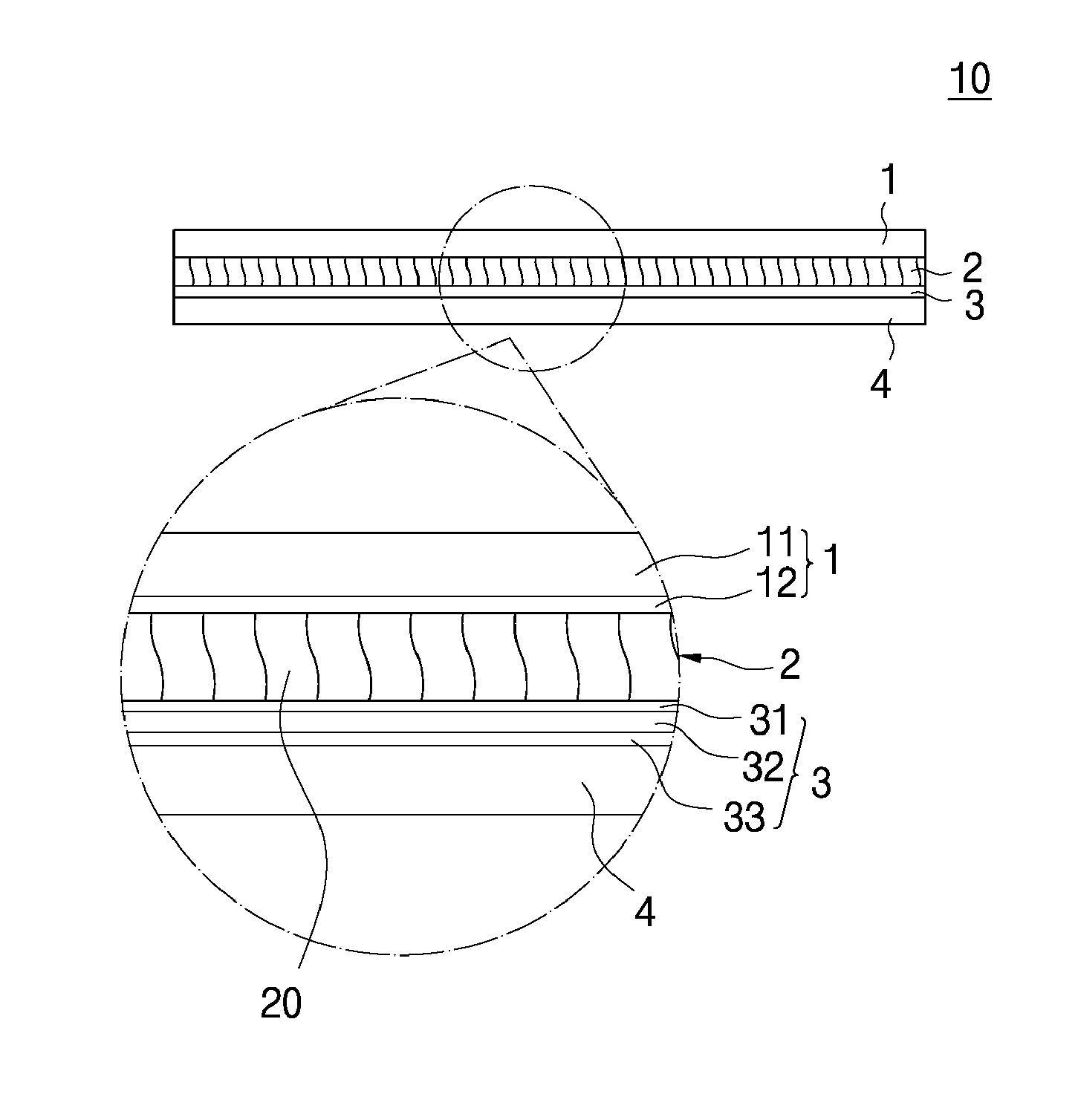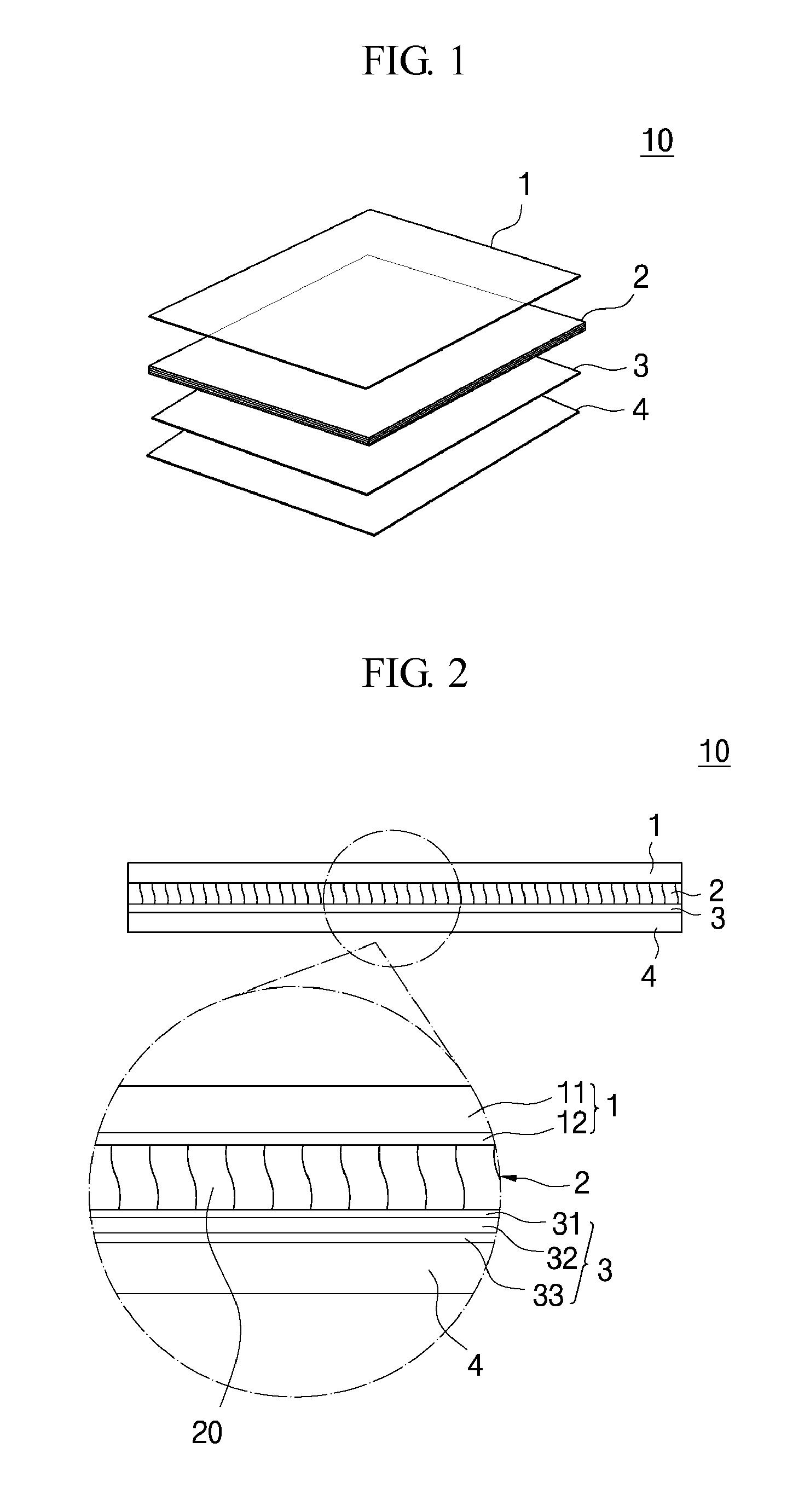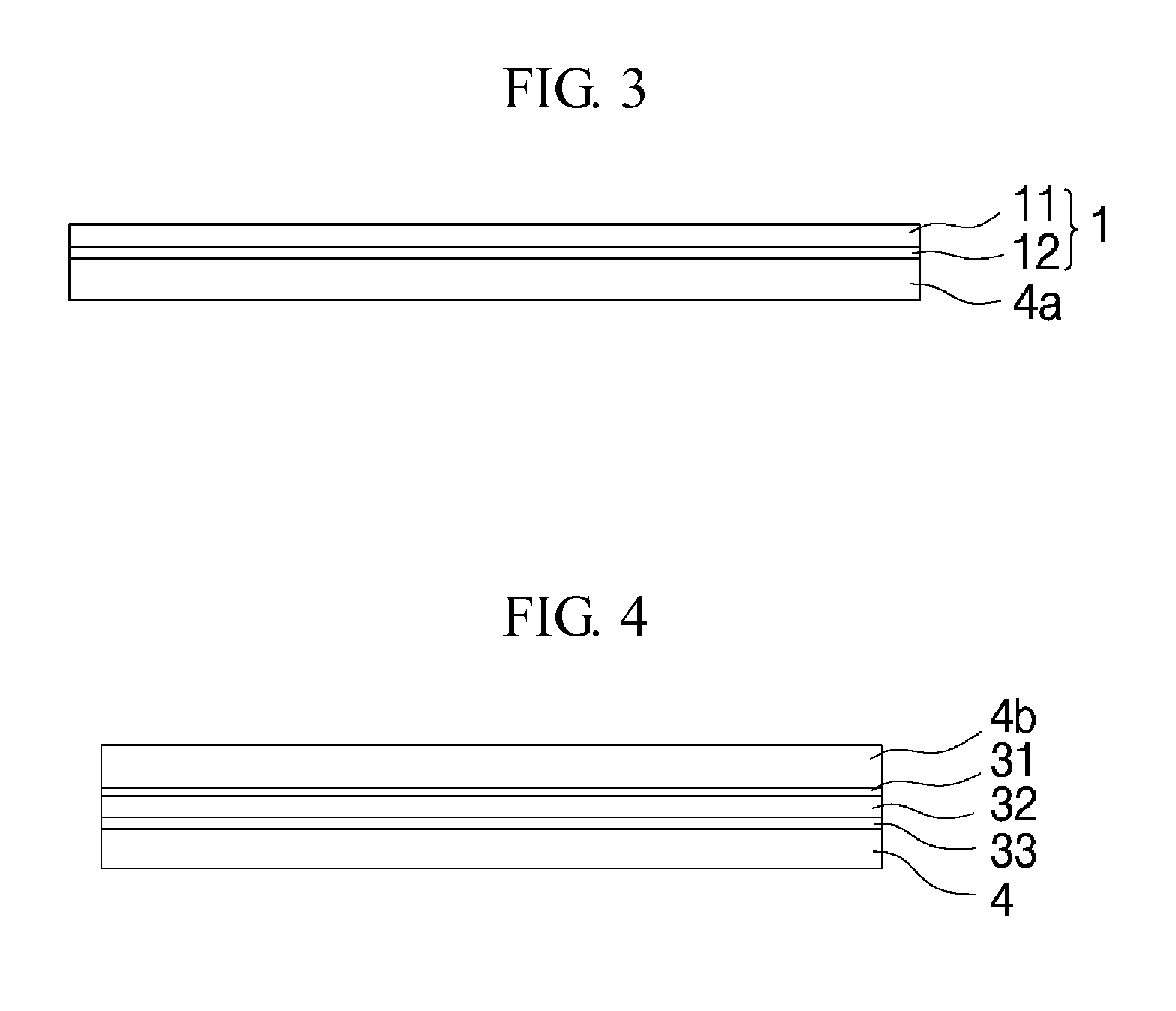In addition, since the digitizer panel is formed of a
thin metal film, a feeble
electromagnetic field is created when the digitizer panel conducts
electricity, and since a built-in ultra-small
metal coil is provided at the end of the portable
wireless electronic pen, an alternating magnetic field is generated in use.
Since the magnetic field shielding sheet is formed of a size corresponding to a digitizer, i.e., a display, in order not to influence upon an electronic pen function, it is difficult to design a gap between the magnetic field shielding sheet and the geomagnetic sensor in the inside of the portable terminal device to become 2 mm or longer.
However, in the case that the magnetic field shielding sheet is used in the portable terminal device in the proximity of and together with the geomagnetic sensor, the magnetic field shielding sheet affects the geomagnetic sensor thereby causing the malfunction in the geomagnetic sensor.
However, it is possible to correct the
azimuth distortion and the sensor sensitivity distortion accurately, through
signal processing, but since it is difficult to correct the
magnetic hysteresis distortion accurately, through
signal processing, an error of the
azimuth may exist according to the malfunction of the geomagnetic sensor.
However, the Fe-based and Co-based amorphous ribbons have too large magnetic permeability, and thus affect the geomagnetic sensor.
In addition, the ferrite sheets also have too large permeability and thus affect the geomagnetic sensor.
In addition, the ferrite sheets also have drawbacks of getting thicker.
However, when compared with the Fe-based and Co-based amorphous ribbons, the
polymer sheet has low magnetic permeability, to thereby cause a problem that a digitizer is very expensive, together with a problem that sensitivity of the digitizer is degraded to the half (½).
In the case of increasing thickness of the sheet in order to improve the performance of the low magnetic permeability, the
polymer sheet gets thick in comparison with the Fe-based and Co-based amorphous ribbons that are thin plates of several tens of micrometers (μm), together with a problem that the material cost is further increased due to an increase of the thickness.
Accordingly, it is difficult to cope with the trend that the terminals get thin.
The sheet proposed in Korean Patent Laid-open Publication No. 10-2005-37015 has a problem of
low permeability when being used as a magnetic field shielding sheet for a digitizer, as a kind of a
polymer sheet.
However, the electromagnetic wave shielding material manufactured according to the Korean Patent Laid-open Publication No. 10-2003-86122 is not applicable to the
magnetic shield sheet for a digitizer due to high magnetic permeability.
However, when both a digitizer function and a
navigation function are implemented in a portable terminal device such as a
smart phone, the above-described conventional magnetic field shielding sheet made of a
Sendust® sheet or a heatless treatment Fe-based
amorphous ribbon sheet does not propose a possible solution to the problems that sensitivity of the digitizer is low due to the low magnetic permeability, a
distortion problem for the geomagnetic sensor is present due to too high magnetic permeability, or the material cost for the magnetic field shielding sheet is very expensive since the thickness of the magnetic field shielding sheet gets thick.
Therefore, the Fe-based
amorphous ribbon sheet exhibits the
magnetic hysteresis even in the case of the change in the earth magnetic field, with the result that a geomagnetic sensor used in a terminal to which a Fe-based amorphous ribbon sheet is applied, has a fatal
disadvantage that even the magnetic
hysteresis due to the Fe-based amorphous ribbon sheet should be corrected.
Further, a nanocrystalline ribbon sheet having a nanocrystalline
microstructure by a heat treatment exhibits a problem that uniformity of the permeability falls down in view of a whole sheet since the size of the nano-
crystal grains in the heat treatment process fails to uniform, and such uniformity deterioration of the permeability may be a factor that degrades the uniformity of characteristics of a digitizer.
In general, in the case of the nanocrystalline ribbon sheet, it is known that it is difficult to prepare a ribbon of 50 mm or wider.
Thus, when a magnetic field shielding sheet for a large-area digitizer of 50 mm or wider, it is difficult to secure the uniformity of the permeability in view of a whole sheet, since at least two sheets of the ribbons are butted or overlapped to cover a required large-area.
 Login to View More
Login to View More 


